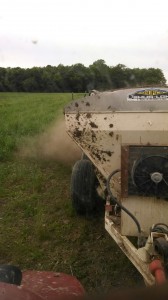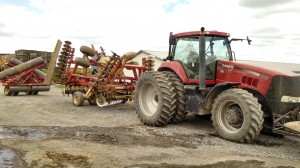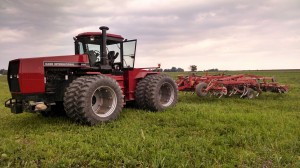The first month of work was a constant blur of running around trying to get hundreds of acres planted with a huge variety of crops – cabbage, cauliflower, field and sweet corn, squash pumpkins, gourds,
soybeans, so on. Crops like field corn, soybeans, and squash are direct seeded while crops like sweet corn and cabbage are transplanted. Direct seeding takes a lot less time and a lot less labor. It can be completed with only one or two people and the planter can move across the field, depending on field conditions, at up to six or seven miles per hour, maybe even more if the field conditions allow it. Transplanting, on the other hand, requires around a dozen people, plants six rows at a time, and can only move across the field at a mile or two per hour. Typically before anything is planted a pre-plant fertilizer is spread.
I described mixing the fertilizer in the last post, and now I’ll describe what happens after that. Each fertilizer is applied at a different rate, measured in pounds or tons per acre. The rate can be set by opening or closing a gate on the back of the spreader. The density was the main determining factor in setting the rate. A chart displaying a range of densities on one axis and the gate setting on the other, with the rates listed between the two.Usually the fertilizer I spread is between 45 and 50lb/cubic foot, and spread between 1000 and 1500 lb/acre. This means that the gate would be set at four or five inches.
Once in the field I was supposed to drive in straight lines at forty foot centers. Until you have practiced this a few times, it is really difficult to accomplish this, and I left many winding paths through the fields.When I was first learning to use the spreader I was told it was a good idea to pace out forty feet and mark it with a flag so you have something to aim at on your way back down the field. For me, fourteen steps takes me forty feet, but I never had a flag to mark so I simply noted which tree or landmark in general to aim the nose of the tractor at.
Once the fertilizer was spread, typically someone would come in with a disk or field cultivator to mix it into the soil and spread it through the root zone, making it more available to the plants. In addition, when mixed in the nutrients are less vulnerable to loss from processes like erosion and volatilization. Once this was done the planters would move into the field, sometimes while we were still preparing the field, depending on how short on time we were.




Speak Your Mind